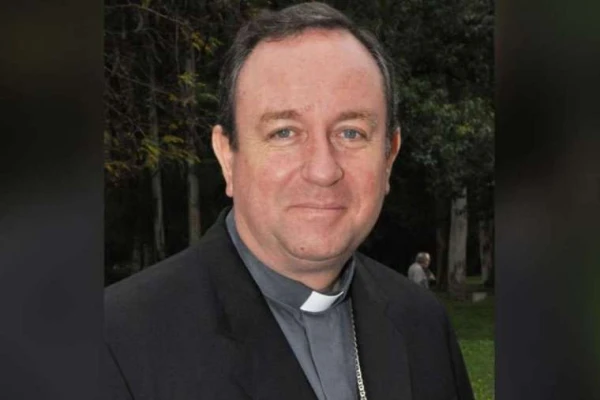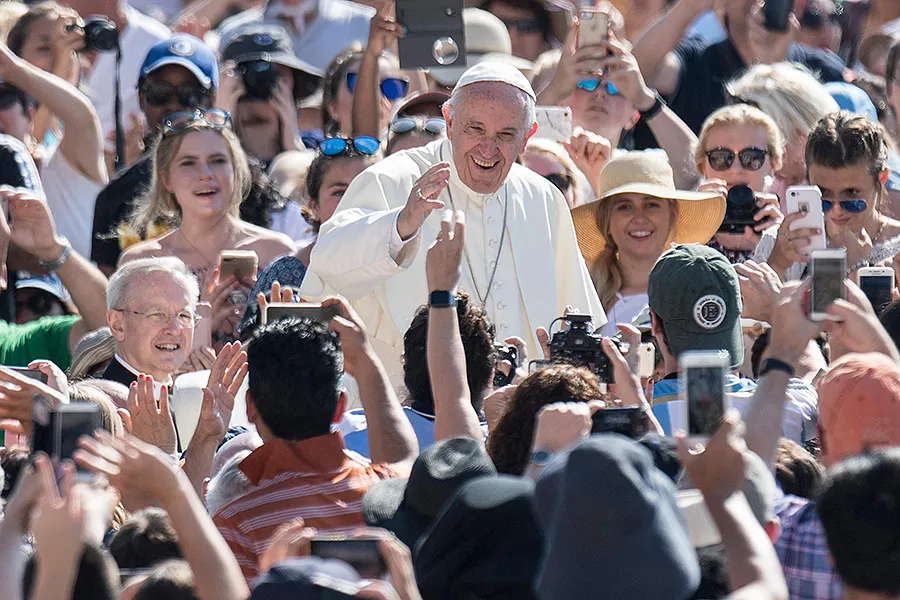
Vatican City, Nov 22, 2019 / 11:00 am (CNA).- Bishop Gustavo Zanchetta has denied that he is avoiding a return to Argentina, where he is being prosecuted for “aggravated continuous sexual assault” and fraud. The bishop's whereabouts remain unknown.
In a statement to members of the press released on Thursday, a spokesman for Zanchetta said the bishop was not in “rebellion” over a Nov. 20 request by prosecutors for his arrest, after the bishop allegedly failed to cooperate in his own ongoing trial.
On Wednesday, a prosecutor of sexual crimes in the Argentine city of Orán, María Soledad Filtrín Cuezzo, requested international assistance in Zanchetta’s arrest, saying he had not responded to repeated telephone calls or emails addressed to the contact information provided by his lawyer.
On Thursday, Associated Press quoted the statement released on Zanchetta’s behalf by Javier Belda, saying that the bishop had not received any order from a judge to surrender himself or return to Orán, and that he remained committed to cooperating with the court proceedings.
The spokesman said that the bishop had only received an email from prosecutors which did not ask for a response.
The letter also said that continued leaks and breifings to the press by local prosecutors had damaged Zanchetta's presumption of innocence.
The statement to the media did not address Zanchetta’s whereabouts. The bishop is believed to by living at the Domus Santa Marta in Vatican City after he was allowed by the court to leave Argentine having presented a document showing that he is employed within Vatican City.
Zanchetta is alleged to have sent sexually explicit selfies from his cell phone, harassed seminarians, and mismanaged the finances of the Diocese of Orán, which he led from 2014 to 2017.
After being allowed to resign as Bishop of Orán for “health reasons” in 2017, Pope Francis named Zanchetta to the specially created position of assessor at the Administration for the Patrimony of the Apostolic See (APSA), the body which acts as the Holy See’s central reserve bank and sovereign wealth fund.
Argentine media has reported that the bishop was first accused of sexually inappropriate behavior as early as 2015.
According to a report from El Tribuno, one of the Zanchetta’s secretaries alerted authorities after accidentally finding sexually explicit images sent and received on Zanchetta’s cell phone in 2015. The complaint says that some of the images depict “young people” having sex, in addition to lewd images of Zanchetta himself.
Pope Francis summoned Zanchetta to Rome for five days in October 2015. The bishop claimed his phone and computer had been hacked, and that the accusations were motivated by ill feeling towards the pope. Francis reportedly accepted the bishop’s excuse that his cell phone had been hacked, and took no further action.
Fr. Juan José Manzano, the former vicar general of the Diocese of Orán has claimed publicly that he first reported Zanchetta in 2015, after the pornographic images were found on his phone. Manzano says he also reported him again in 2017.
In January, 2019, the Holy See confirmed Zanchetta was the subject of a canonical investigation and had been suspended from his role at APSA. It is unclear what, if any, active role he currently has in the curia following his presentation of a letter of employment to the Argentine court.
The Holy See authorities have not confirmed if Zanchetta is currently in Vatican City, or if they would respond favorably to a request from the Argentine court to extradite him should an arrest warrant be issued.
If you value the news and views Catholic World Report provides, please consider donating to support our efforts. Your contribution will help us continue to make CWR available to all readers worldwide for free, without a subscription. Thank you for your generosity!
Click here for more information on donating to CWR. Click here to sign up for our newsletter.




Leave a Reply